Abstract
Symbioses between marine invertebrates and their chemoautotrophic and methanotrophic symbionts are now known to exist in a variety of habitats where reduced chemical species are present. The utilization of chemical energy and reliance on C1 compounds by these symbioses are well documented. Much less is known about their metabolism of nitrogen. Earlier work has shown that the tissues of organisms in these associations are depleted of 15N compared with those of other marine organisms, indicating that local sources of nitrogen are assimilated and that novel mechanisms of nitrogen metabolism may be involved. Although these symbioses have access to rich sources of ammonium (NH4+ and NH3) and/or nitrate, several investigators have proposed that N2 fixation may account for some of these isotope values. Here we report that [15N]ammonium and, to a lesser degree, [15N]nitrate are assimilated into organic compounds by Solemya reidi, a gutless clam containing S-oxidizing bacteria, and seep mussel Ia, an undescribed mytilid containing methanotrophic bacteria. In contrast, Riftia pachyptila, the giant hydrothermal vent tube worm symbiotic with S-oxidizing bacteria, assimilated nitrate but not exogenous ammonium. The rates of assimilation of these sources are sufficient to at least partially support C1 compound metabolism. N2 assimilation was not exhibited by the symbionts tested.
Full text
PDF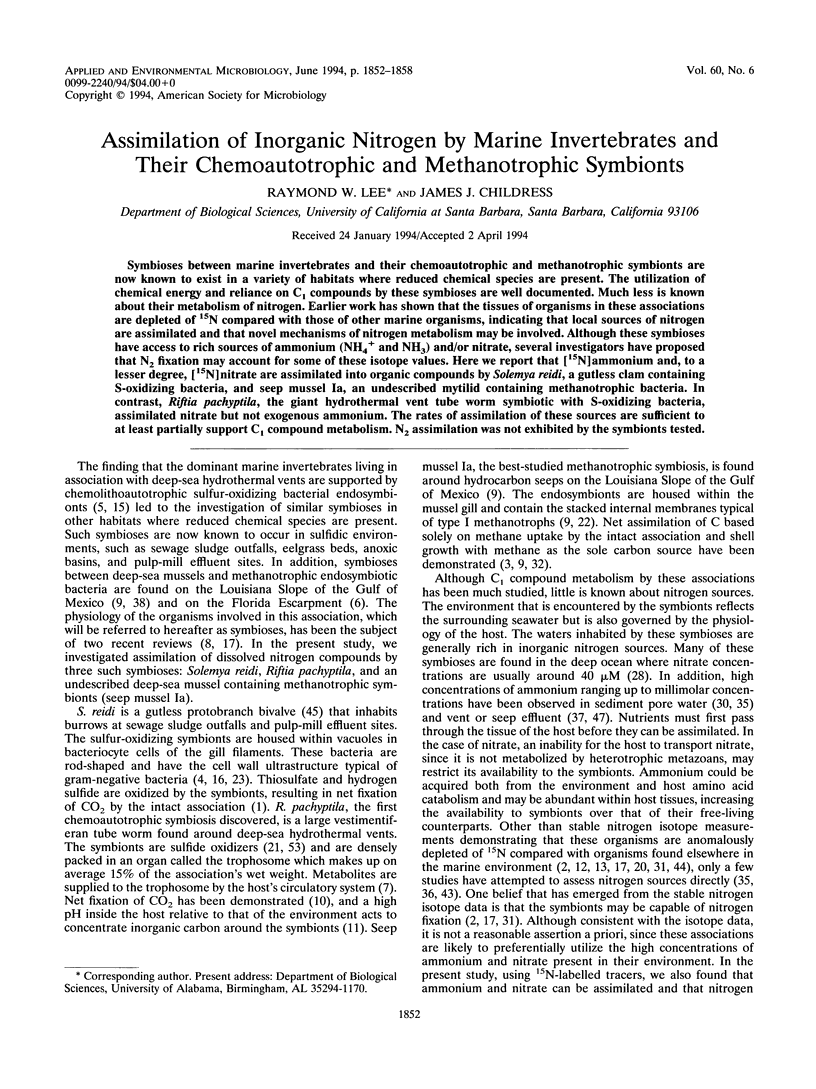
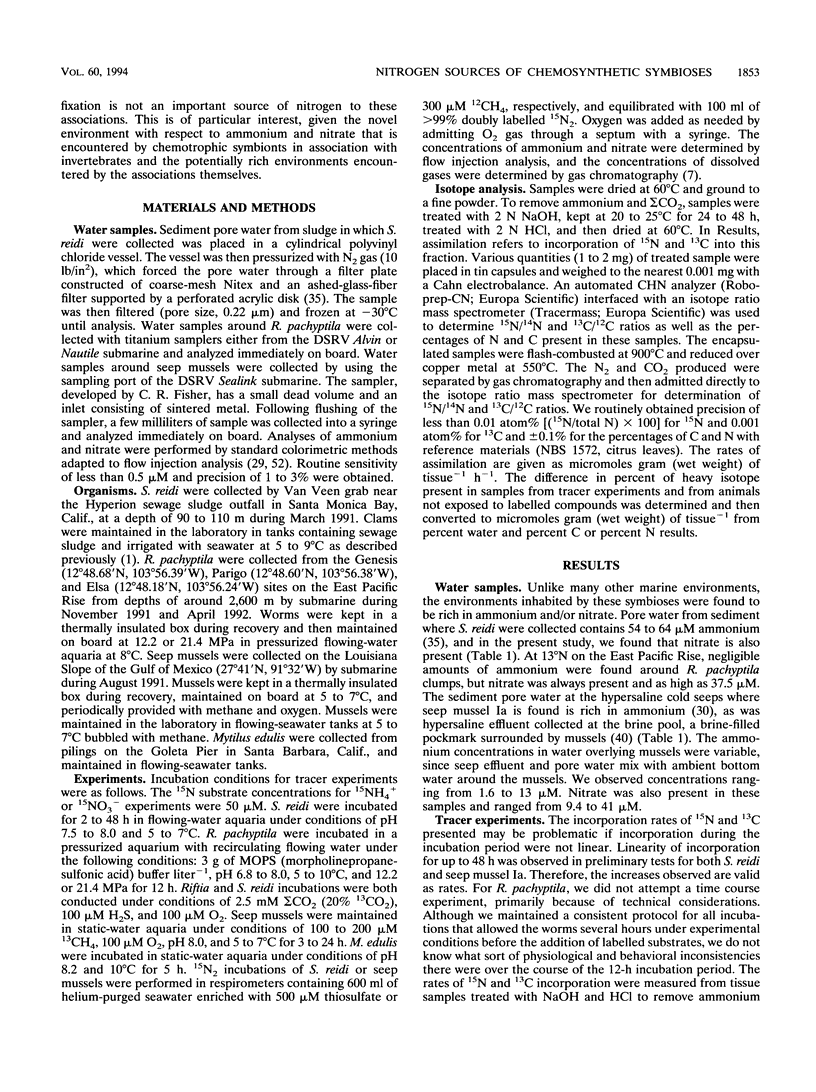
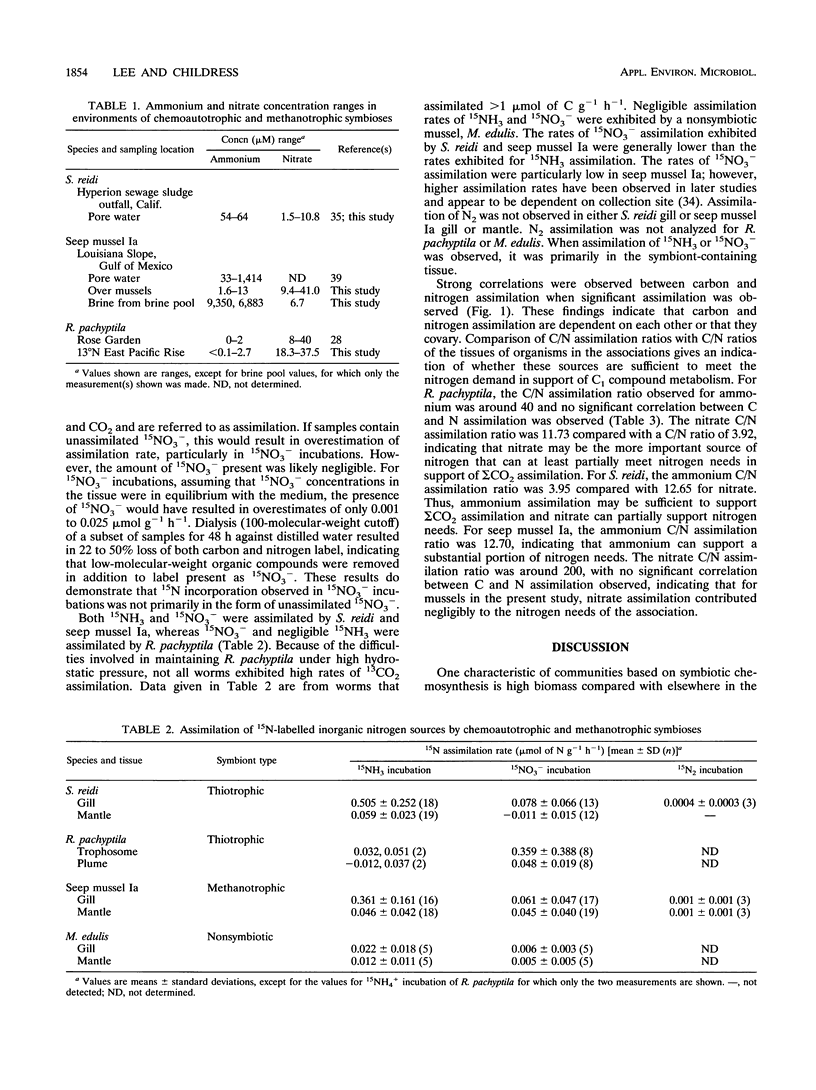
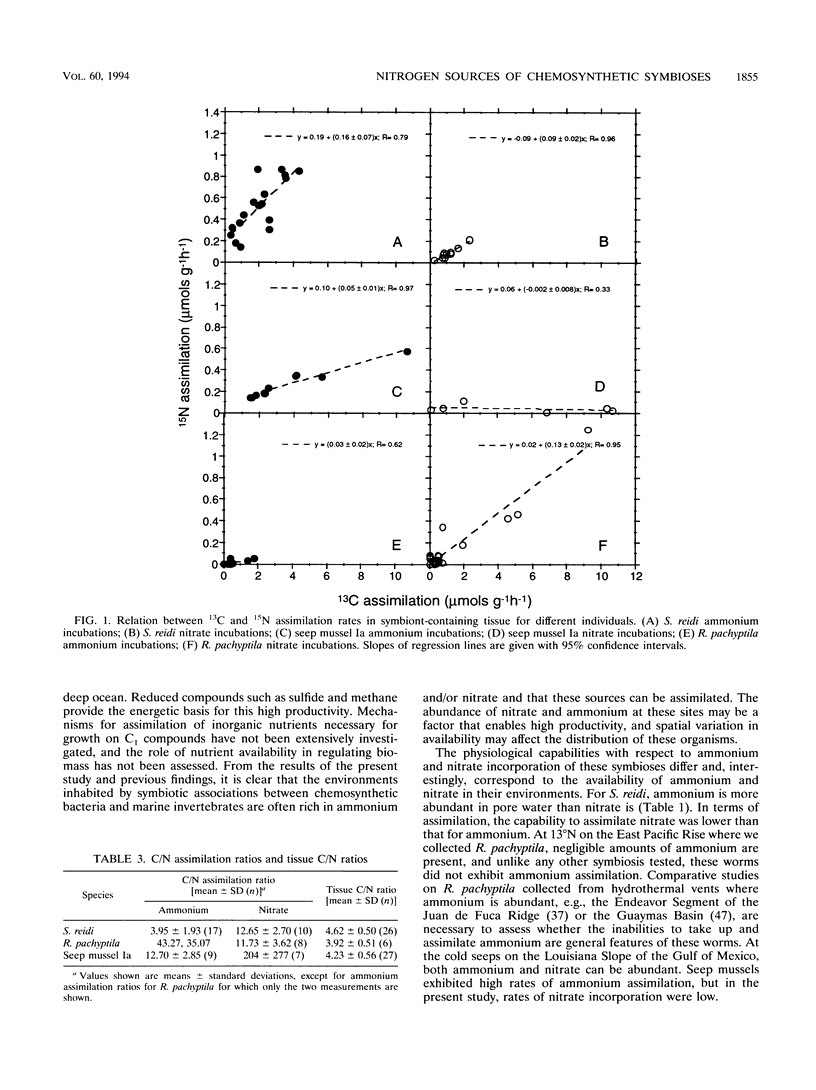
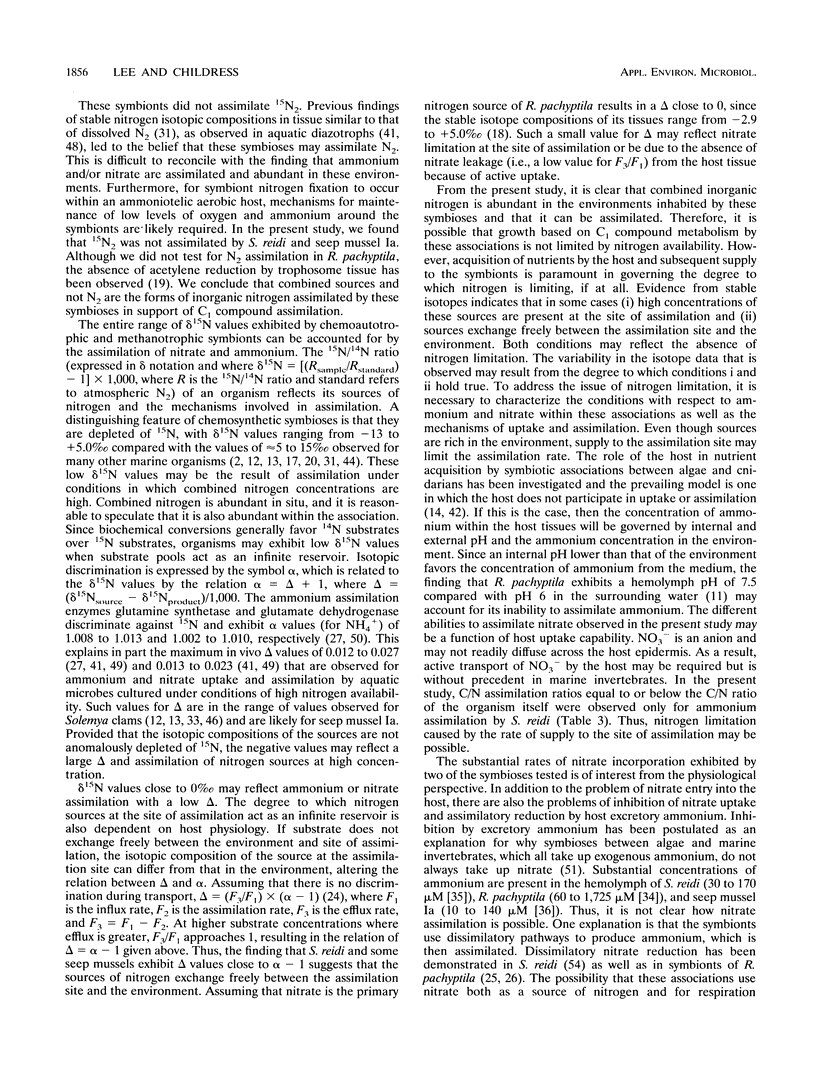
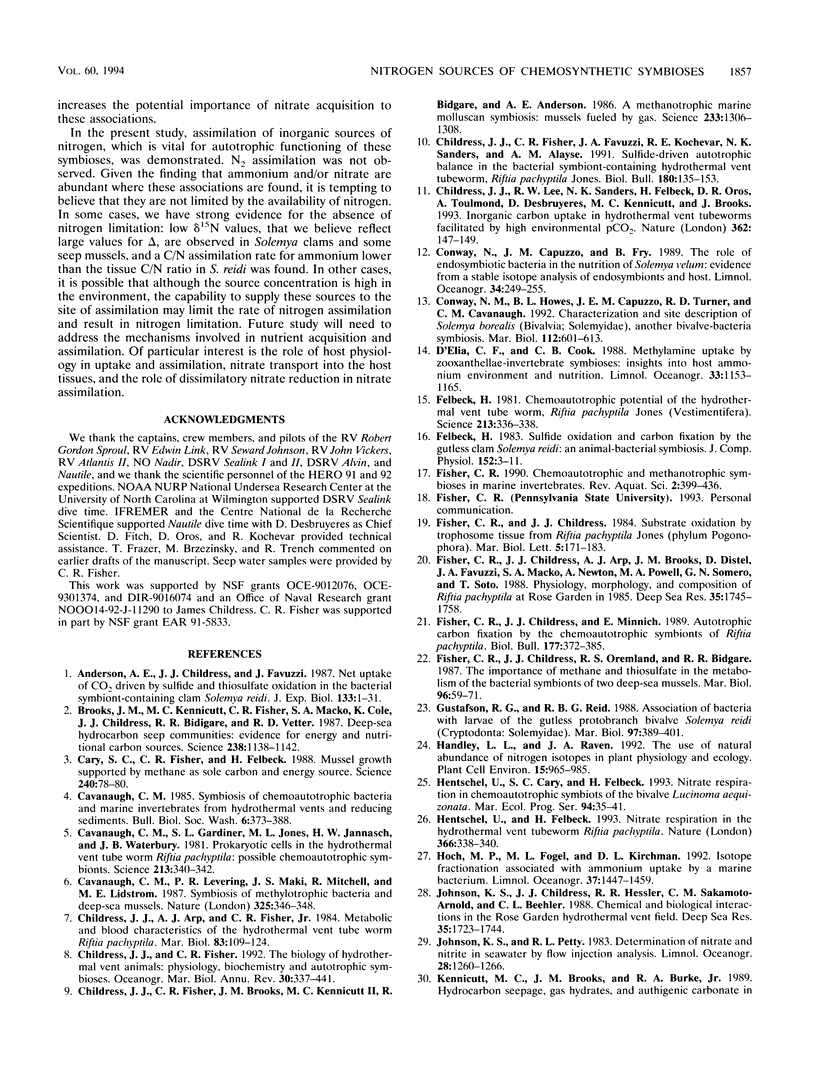
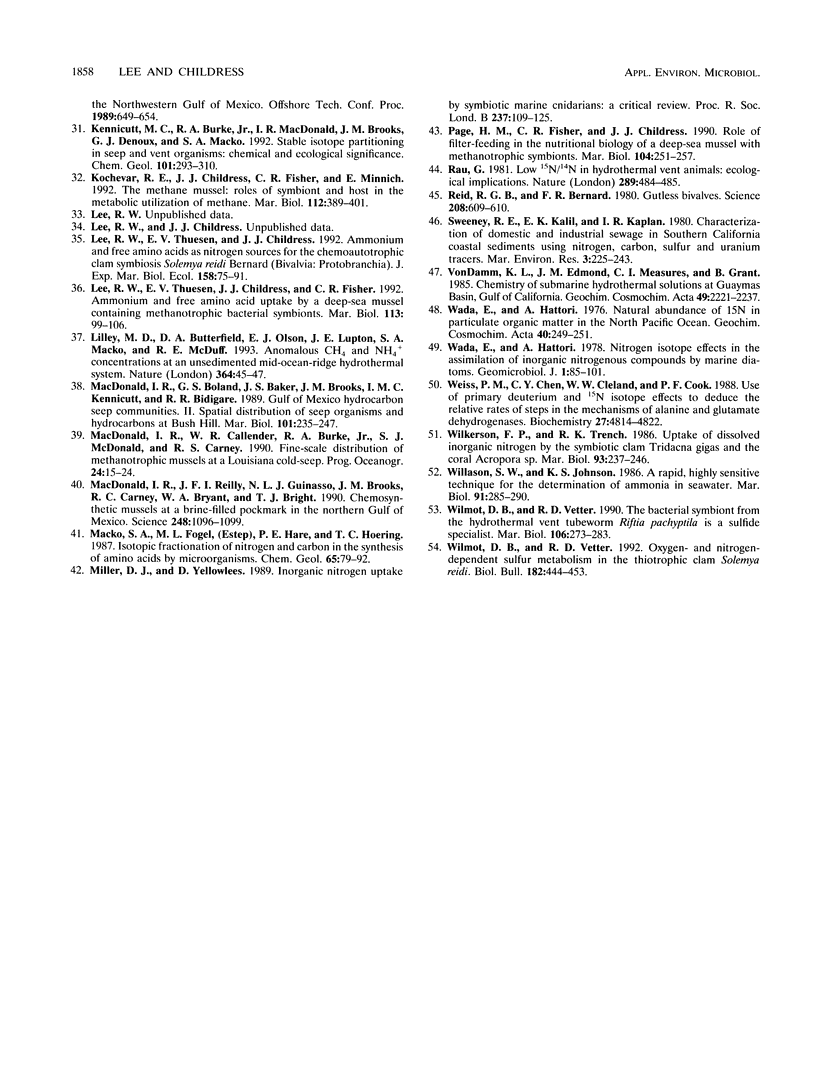
Selected References
These references are in PubMed. This may not be the complete list of references from this article.
- Brooks J. M., Kennicutt M. C., 2nd, Fisher C. R., Macko S. A., Cole K., Childress J. J., Bidigare R. R., Vetter R. D. Deep-sea hydrocarbon seep communities: evidence for energy and nutritional carbon sources. Science. 1987 Nov 20;238(4830):1138–1142. doi: 10.1126/science.238.4830.1138. [DOI] [PubMed] [Google Scholar]
- Cary S. C., Fisher C. R., Felbeck H. Mussel growth supported by methane as sole carbon and energy source. Science. 1988 Apr 1;240(4848):78–80. doi: 10.1126/science.240.4848.78. [DOI] [PubMed] [Google Scholar]
- Cavanaugh C. M., Gardiner S. L., Jones M. L., Jannasch H. W., Waterbury J. B. Prokaryotic Cells in the Hydrothermal Vent Tube Worm Riftia pachyptila Jones: Possible Chemoautotrophic Symbionts. Science. 1981 Jul 17;213(4505):340–342. doi: 10.1126/science.213.4505.340. [DOI] [PubMed] [Google Scholar]
- Childress J. J., Fisher C. R., Brooks J. M., Kennicutt M. C., 2nd, Bidigare R., Anderson A. E. A methanotrophic marine molluscan (bivalvia, mytilidae) symbiosis: mussels fueled by gas. Science. 1986 Sep 19;233(4770):1306–1308. doi: 10.1126/science.233.4770.1306. [DOI] [PubMed] [Google Scholar]
- Felbeck H. Chemoautotrophic Potential of the Hydrothermal Vent Tube Worm, Riftia pachyptila Jones (Vestimentifera). Science. 1981 Jul 17;213(4505):336–338. doi: 10.1126/science.213.4505.336. [DOI] [PubMed] [Google Scholar]
- Macdonald I. R., Reilly J. F., 2nd, Guinasso N. L., Jr, Brooks J. M., Carney R. S., Bryant W. A., Bright T. J. Chemosynthetic mussels at a brine-filled pockmark in the northern gulf of Mexico. Science. 1990 Jun 1;248(4959):1096–1099. doi: 10.1126/science.248.4959.1096. [DOI] [PubMed] [Google Scholar]
- Reid R. G., Bernard F. R. Gutless bivalves. Science. 1980 May 9;208(4444):609–610. doi: 10.1126/science.208.4444.609. [DOI] [PubMed] [Google Scholar]
- Weiss P. M., Chen C. Y., Cleland W. W., Cook P. F. Use of primary deuterium and 15N isotope effects to deduce the relative rates of steps in the mechanisms of alanine and glutamate dehydrogenases. Biochemistry. 1988 Jun 28;27(13):4814–4822. doi: 10.1021/bi00413a035. [DOI] [PubMed] [Google Scholar]


